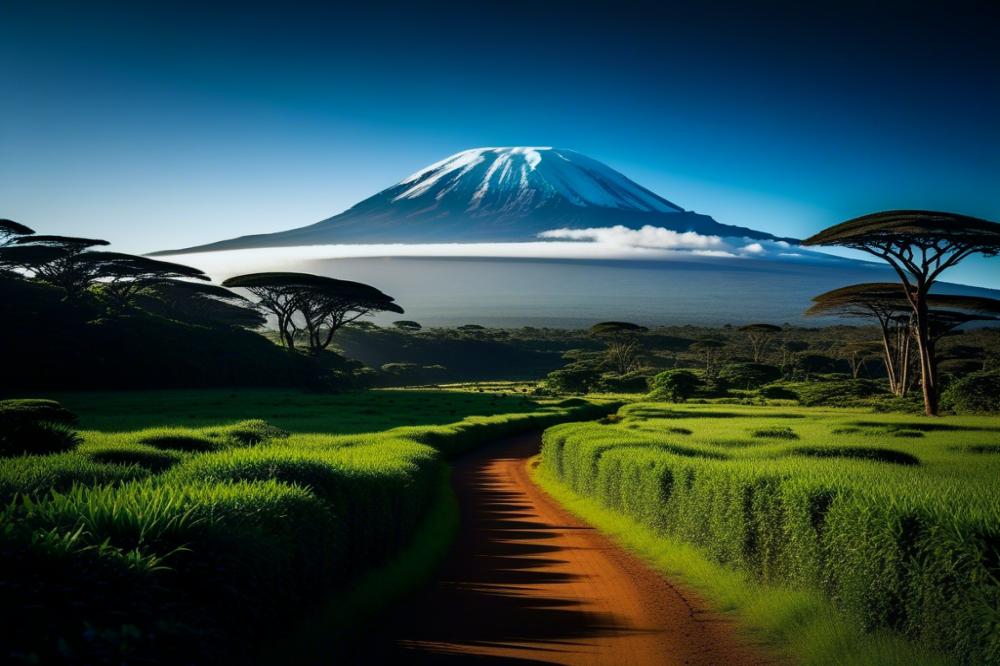Climbing Mount Kilimanjaro: The Ultimate Adventure in Africa
Adventure seekers from all over the world set their sights on one iconic challenge: Mount Kilimanjaro. Renowned as the highest peak in Africa, it offers an unparalleled experience for those craving excitement and natural beauty. Imagine standing on a summit with breathtaking views, having journeyed through diverse ecosystems from lush rainforests to stark alpine desert. Kilimanjaro trekking captures the spirit of Adventure Travel, making it a bucket list item for many.
The allure of this climb lies not just in reaching the top, but in the entire experience. Every step taken is a journey through stunning landscapes, rich cultures, and unforgettable moments. Preparing for this adventure involves understanding hiking tips such as the best routes to follow and the importance of acclimatization to avoid altitude sickness. With proper planning and knowledge, participants can enjoy a safe and rewarding experience.
Traveling to Tanzania also brings the chance for incredible photography. Picturesque vistas and unique wildlife abound, creating perfect opportunities to capture memories. Whether you prefer guided tours or solo treks, this journey offers countless chances to witness nature at its finest.
Equipping yourself with a gear checklist ensures you are prepared for varying weather conditions. The right clothing and equipment can make the difference between a challenging trek and an enjoyable adventure. Travel safety is paramount, especially when hiking in remote areas. Having a reliable guide can significantly enhance not only your knowledge of the terrain but also your safety during the climb.
Ultimately, climbing Kilimanjaro stands as a significant milestone in any traveler’s life. This adventure embodies the essence of overcoming challenges and connecting with the natural world. It is an experience that resonates deeply and leaves lasting memories. Whether you embark on this journey for the thrill or the achievement, the sense of accomplishment is profound.
Climbing Mount Kilimanjaro: An Overview
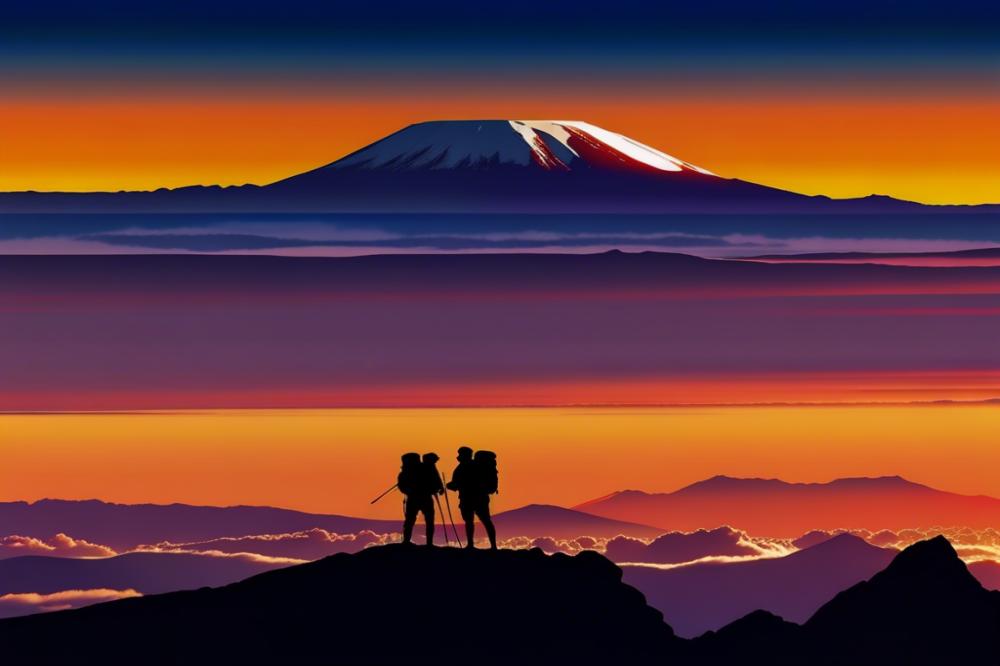
Mount Kilimanjaro, located in Tanzania, stands as Africa’s highest peak, soaring to a magnificent 19,341 feet (5,895 meters). Reaching its summit is a dream for many adventurers. Kilimanjaro trekking is more than just a hike; it’s a journey through breathtaking landscapes and diverse ecosystems.
The mountain showcases five distinct climate zones, from lush rainforests to arctic conditions at the summit. Each zone offers unique flora and fauna, captivating trekkers with sights that change as they ascend. Photographers flock here for stunning panoramic views that capture the beauty of nature in one frame.
While planning your adventure, consider some essential hiking tips. Understanding things like altitude sickness is crucial. Adjusting your body with proper acclimatization can make a significant difference in your experience. Whether you’re a beginner or an experienced hiker, knowing the best routes can guide your journey.
Guided tours are popular for those seeking assistance and safety. They provide valuable insights and help with travel safety as you navigate the trail. Don’t forget to bring a gear checklist to ensure you’re prepared for various conditions along the way. Each item you pack supports a successful climb.
Climbing Mount Kilimanjaro allows for personal challenges and growth. Consider this adventure an opportunity to step outside your comfort zone. Explore the possibility of joining a group or going solo; both options can lead to incredible memories.
Best Routes for Climbing Mount Kilimanjaro
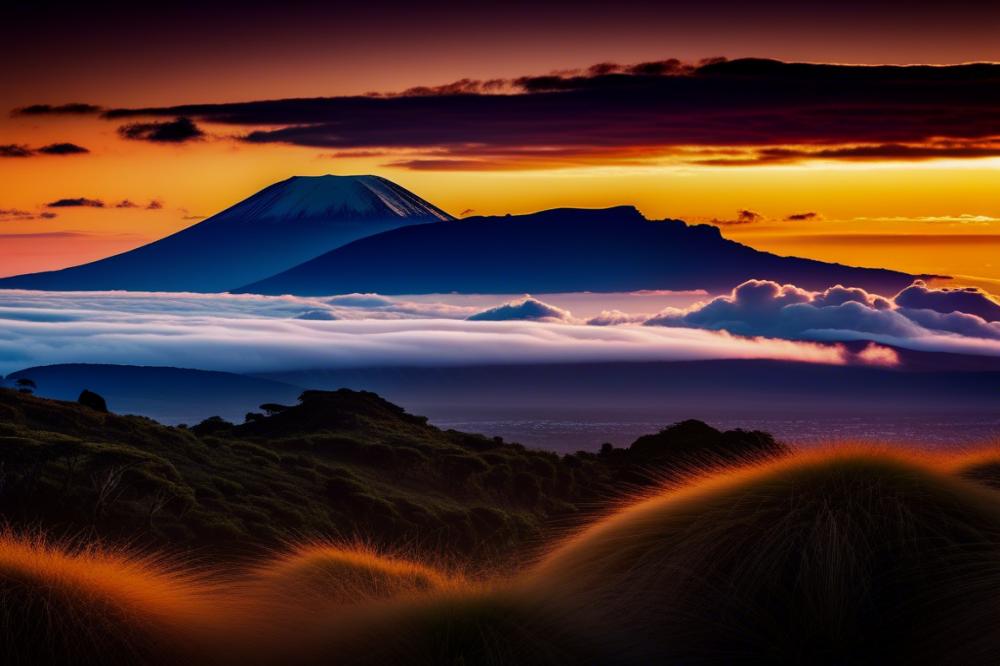
Choosing the right route is essential when embarking on your Kilimanjaro trekking adventure. Each path offers distinct experiences in terms of scenery, difficulty, and time required to reach the summit.
Machame Route
This route is famous for its stunning vistas. It takes about six to seven days to complete, which allows for good acclimatization. Hikers often say that the views from the top are breathtaking. The challenge comes from the steep climbs, especially on the first day. Altitude sickness may affect some trekkers, so you should be prepared. Both day hikes and nights spent in tents provide a unique experience for adventure seekers.
Marangu Route
Often referred to as the “Coca-Cola Route,” the Marangu path is one of the easiest. It typically takes five to six days. This makes it a popular choice among beginners. Hikers stay in huts along the way, offering more comfort than camping. However, the scenery is considered less spectacular compared to other routes. It is crucial to remain vigilant about altitude sickness, even on this easier path.
Lemosho Route
This route is known for its beautiful landscapes and diverse ecosystems. Trekkers usually take seven to eight days to complete the journey. The added days enhance acclimatization, thus reducing the risk of altitude sickness. Many admire the lush forests and the fantastic views as they climb. It is perfect for those keen on photography. However, it can be more expensive due to the longer duration and additional logistics.
Rongai Route
The Rongai route starts from the northern side of Kilimanjaro. It typically takes about six to seven days to reach the summit. This path is slightly less traveled, offering a more secluded experience. While the scenery is nice, it lacks the diverse landscapes found on some other trails. Hikers might experience challenges with acclimatization since it is less gradual. Travel safety should always be a priority, regardless of the chosen route.
Every route has its benefits and drawbacks. Consider what you value most: scenery, difficulty, or comfort. While planning, use a gear checklist to ensure you have the necessary equipment. Remember that guided tours can make your experience safer and more enjoyable. Now, which journey will you choose for your ultimate adventure?
Preparing for the Climb: Hiking Tips and Gear Checklist
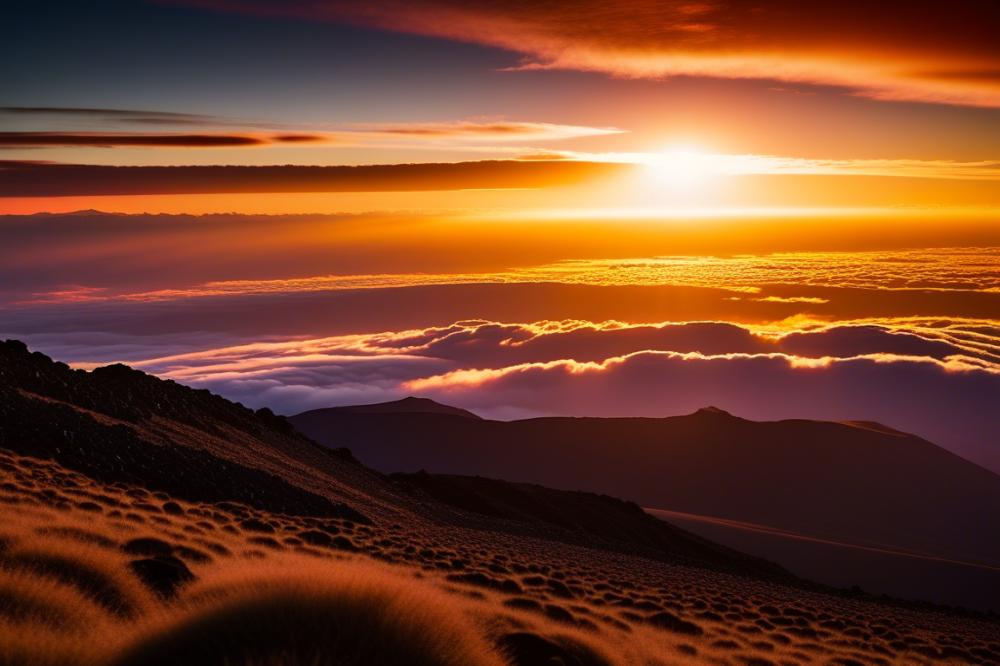
When you decide to tackle Kilimanjaro trekking, preparation is key. A successful trek requires both physical fitness and mental readiness. Start with a training schedule six months before your trip. Focus on hiking on varied terrains. Aim for longer hikes each week. Cardio exercises like running can also build your endurance.
Mental preparation is just as essential. Stay motivated and visualize reaching the summit. Read stories from previous climbers for inspiration. Practice mindfulness or meditation to build resilience. Facing altitude sickness is a reality on this journey. Knowledge about acclimatization can help you overcome its challenges.
Training should include high-altitude hikes, if possible. Research the best routes for your trip. Each route has different lengths and difficulty levels. Choose one that matches your experience. Consider joining guided tours for added safety and expertise.
Creating a gear checklist is crucial. Gather the necessary clothing first. Layering is vital to adapt to changing temperatures. A moisture-wicking base layer will keep you dry. Insulating mid-layers help retain heat. Don’t forget a waterproof outer layer to protect against rain. A good pair of trekking boots is a must, too. They will provide stability and comfort on rocky trails.
Next, consider equipment. A quality backpack is essential. It should fit well and hold all your gear. A hydration system keeps you hydrated throughout the trek. Pack trekking poles to help with balance and reduce strain. A good sleeping bag will be crucial at high altitudes.
Personal items should also make your gear list. Sunscreen is non-negotiable to protect against strong UV rays. Sunglasses will shield your eyes from glare. Remember a first aid kit for any minor injuries. Take your camera for stunning photography opportunities along the way.
Prioritize travel safety as you prepare. Ensure you have appropriate travel insurance. Share your itinerary with friends or family back home. Prepare to adapt your plans based on weather conditions.
Climbing Mount Kilimanjaro is a remarkable journey. With the right hiking tips and a thorough gear checklist, you will set yourself up for an adventure of a lifetime.
Understanding Altitude Sickness and Acclimatization
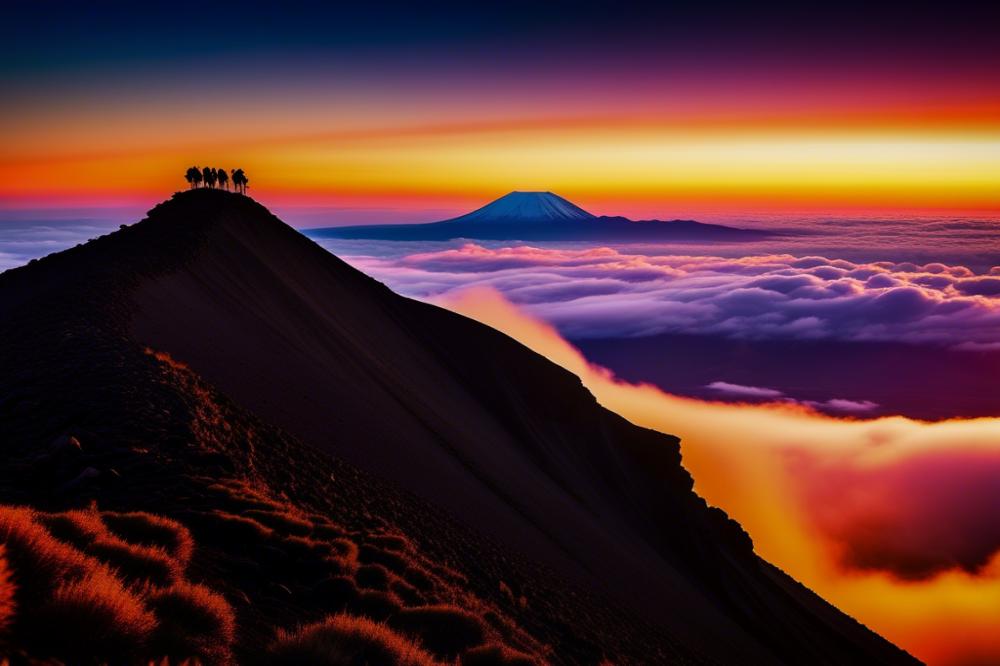
When embarking on a Kilimanjaro trekking adventure, altitude sickness is a serious concern. This condition occurs as you ascend to higher elevations, where the air contains less oxygen. Some individuals may experience symptoms like headaches, nausea, dizziness, or fatigue. Recognizing these signs early can make a significant difference. It’s vital to pay attention to what your body is telling you during the climb.
To reduce the risks associated with altitude sickness, acclimatization is key. This process allows your body to adjust to thinner air and increased heights. Choose one of the best routes that includes longer itineraries, as they offer plenty of time for gradual ascent. Slower, steadier trekking allows for better acclimatization, so prioritize pacing yourself. Consider taking rest days if you start feeling unwell.
Hydration plays an essential role in your journey. Drinking enough water helps to combat altitude sickness by maintaining proper blood circulation. Aim for at least 3 to 4 liters daily, depending on your activity level and the weather. Remember, staying ahead of dehydration is crucial, as symptoms can worsen without proper fluids.
Incorporating hiking tips from experienced climbers can also enhance your chances of a successful trek. Prepare a gear checklist to make sure you have the right equipment. Warm clothing and good hiking boots are non-negotiable. Even though the terrain is exciting and picturesque, travel safety should always be your priority. A guided tour can provide support and additional knowledge about acclimatization strategies. Guides can spot symptoms early and help manage situations effectively.
Lastly, don’t forget the joy of capturing the stunning scenery. Photography can be a rewarding part of the climb, but stay mindful of your surroundings. Keep taking breaks to enjoy the views while also allowing your body to adapt to the altitude. This blend of adventure and awareness makes climbing Mount Kilimanjaro a memorable experience.
Travel Safety: Staying Safe While Climbing
Planning to climb Kilimanjaro? Safety should be your top priority. Choosing reputable guided tours is essential. Experienced guides understand the mountain’s challenges and know how to handle emergencies. They can also provide valuable hiking tips and ensure you’re prepared for the journey ahead.
While trekking, always pack a comprehensive gear checklist. Essential items include a first-aid kit, suitable clothing for various weather conditions, and sturdy footwear. The right gear can make a significant difference. It’s also wise to carry a portable oxygen supply if you’re worried about altitude sickness. This issue can affect anyone, even the fittest climbers.
First-Aid Measures
Understanding basic first-aid measures is a critical aspect of travel safety. Self-care knowledge helps when small injuries happen. For instance, knowing how to treat cuts and scrapes can prevent infections. Additionally, your guide should be trained in emergency responses, so ask about their certifications.
Dealing with emergencies is challenging, especially in remote locations. If someone in your group experiences severe altitude sickness, immediate action is necessary. Descending to lower altitudes often provides quick relief. Communication with your team is crucial. Make sure everyone understands the signs of altitude-related issues.
Importance of Safety Gear and Emergency Plans
Safety gear is not just an afterthought. Quality equipment can mitigate risks. For example, a reliable headlamp is vital for night trekking. Likewise, carrying a whistle can help alert others in case of distress. Emergency plans should be well-defined for every trekker.
Before setting off, discuss what to do in case of various scenarios. It’s also important to review the best routes for your team’s experience level. Some paths require different preparations. Every climber must know about acclimatization, which plays a big role in preventing altitude sickness.
Don’t forget about the art of photography on this adventure. Capturing memorable moments is exciting. However, do not get too consumed by your camera. Always stay aware of your surroundings. Keep safety as your main focus, and the stunning views will be the icing on the cake.
Photography Opportunities on Kilimanjaro
When trekking up Kilimanjaro, photographers will discover a treasure trove of stunning views and unique landscapes. Each step along the trail offers new angles and vistas that can make any picture unforgettable. From lush rainforests to stark alpine deserts, the scene changes dramatically. This diversity makes for incredible photo opportunities.
Sunrise and sunset are magical times for photography. Early mornings reveal crisp skies painted in soft pastel colors. The golden light at dawn can make the mountain glow. Planning to wake early helps you catch this beauty. Equally captivating is the sunset, with vibrant oranges and reds casting a warm glow over the peaks. Look for a good vantage point to capture these moments.
What should be in your photography gear checklist? A quality camera is essential, but you don’t need the most expensive model. A smartphone can also do wonders. Using a tripod stabilizes shots, especially during low-light conditions. Bring extra batteries too; colder temperatures can drain them quickly as you trek. For those who know their stuff, using a DSLR or mirrorless camera allows for better control over settings like exposure and aperture.
When it comes to photography techniques, consider composition. The rule of thirds is a solid guideline for framing your shots. Instead of centering your subjects, try placing them off to one side. Leading lines can also guide the viewer’s eye into the image, such as paths or the mountain itself. Another handy hiking tip is to wait for the right moment. Don’t rush your shots; patience often brings the best rewards.
Travel safety and altitude sickness awareness are crucial during your adventure. As you ascend, remember to take it slow. Acclimatization helps your body adjust to thinner air and can give you more energy for that perfect shot. Keep an eye on your body and listen to it. If symptoms arise, descending may be necessary.
Guided tours can also enhance the experience. Knowledgeable guides share insights on the landscape and provide tips that improve your photography skills. They know the best routes to take for stunning photography spots as well.
Capturing the grandeur of Kilimanjaro is an adventure in itself. With the right gear, timing, and techniques, anyone can create lasting memories through photography. The journey makes every click of the shutter worthwhile.
Final Thoughts on Climbing Mount Kilimanjaro
Choosing to climb Mount Kilimanjaro is not just about reaching the summit; it’s about the entire adventure. From the lush rainforests at the base to the icy peak, each step reveals the beauty of nature. Many people find this journey transforms them both physically and mentally. Imagine standing atop Africa, overlooking a breathtaking view that few have the chance to experience.
Preparation is key to a successful trek. Those who invest time in research and gather essential hiking tips tend to have a smoother journey. Consider the unpredictable weather and the altitude when planning your adventure. Understanding your limits will help you enjoy the trek even more. Make sure to pack the right gear and stay well-hydrated throughout your climb.
This experience will challenge you, yet it offers incredible rewards. The camaraderie formed with fellow climbers creates lasting bonds. Sharing this journey allows you to create unforgettable memories. By climbing Kilimanjaro, you will remain connected to a sense of accomplishment long after your adventure ends.
If you’re considering an African holiday adventure, make sure this trek is on your list. The unique combination of stunning landscapes and personal growth awaits you. Whatever your motivation, it’s a journey that you will cherish for years to come. So, gather your courage, prepare adequately, and embrace the challenge. The peak of Kilimanjaro awaits!

